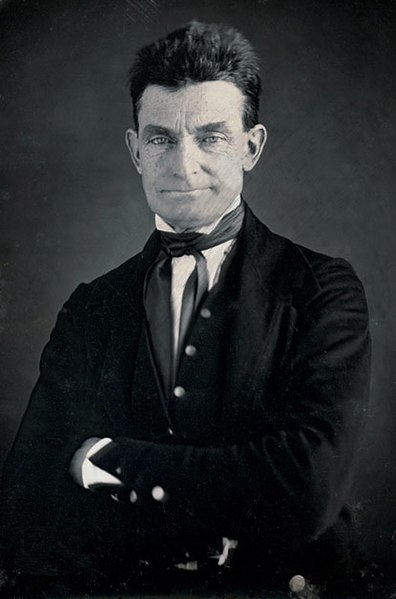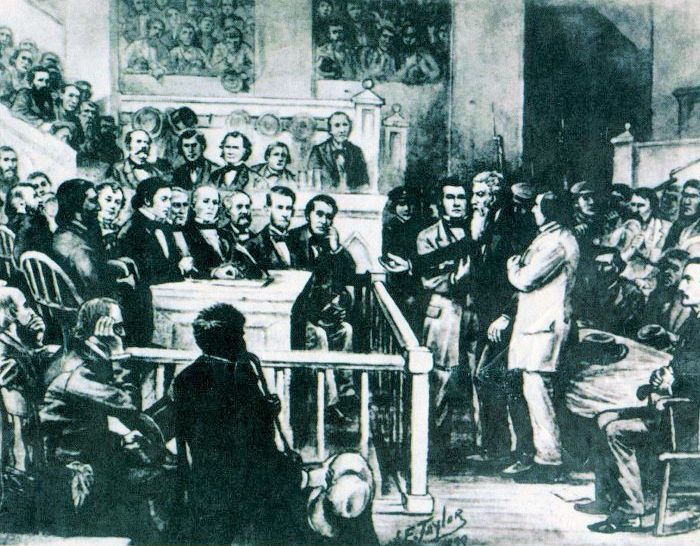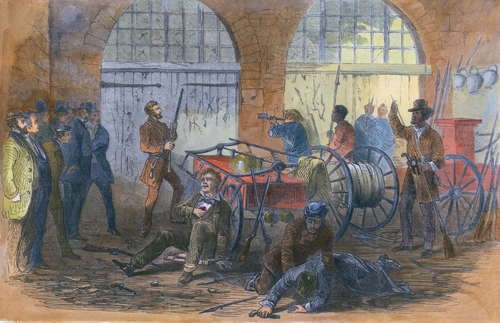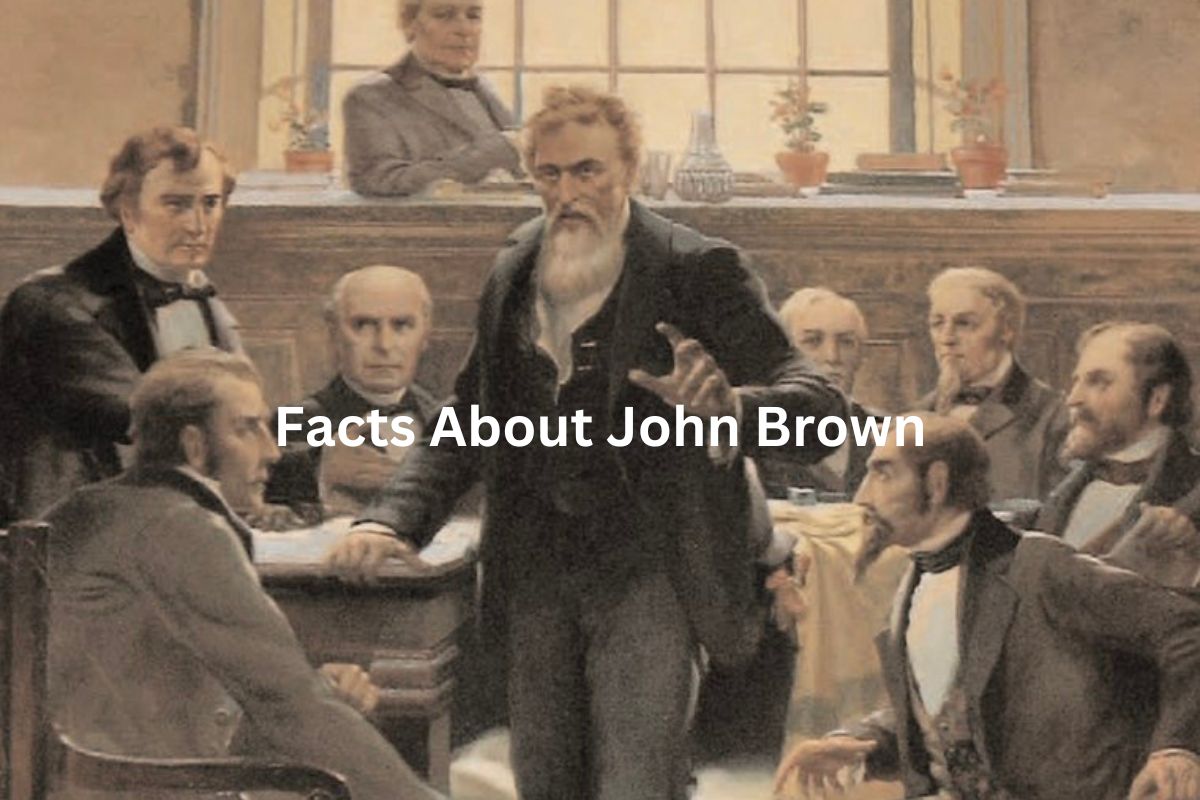John Brown (1800-1859) was a prominent abolitionist in the United States who is known for his radical tactics in the fight against slavery. Born in Connecticut, Brown dedicated his life to the cause of ending slavery and believed that armed insurrection was necessary to achieve this goal.
He gained national attention through his failed raid on Harpers Ferry in 1859, which further polarized the nation and heightened tensions between the North and South.
Brown’s unwavering commitment to his cause, his use of violence, and his eventual execution have made him a controversial figure in American history.
His actions and the debates surrounding them played a significant role in the lead-up to the American Civil War and continue to shape discussions about activism and the fight against injustice.
John Brown Facts
1. John Brown was born on May 9, 1800, in Torrington, Connecticut, United States
John Brown was born on May 9, 1800, in Torrington, Connecticut, United States. He was the fourth of eight children born to Owen Brown and Ruth Mills Brown. His family belonged to the Congregational Church, and his father was a devout Calvinist.
Also Read: Accomplishments of John Brown
John Brown’s upbringing in a religious household would later influence his strong convictions and belief in the righteousness of his cause.

2. He was a prominent abolitionist who became known for his radical tactics in the fight against slavery
Brown was a prominent abolitionist who dedicated his life to the cause of ending slavery. He became deeply involved in the anti-slavery movement in the mid-19th century when tensions between pro-slavery and anti-slavery factions were escalating.
Witnessing the horrors of slavery and the Fugitive Slave Act of 1850, which required the return of escaped slaves to their owners, further solidified Brown’s commitment to the abolitionist cause.
3. Brown believed that armed insurrection was necessary to overthrow the institution of slavery
Brown’s approach to ending slavery was radical for his time. While many abolitionists advocated for peaceful means and gradual change, Brown believed that the only way to eradicate slavery was through armed insurrection.
Also Read: John Brown Timeline
He believed that violence was necessary to not only free the enslaved but also to shake the conscience of the nation and prompt a moral reckoning. Brown’s uncompromising stance set him apart from other abolitionists and made him a controversial figure in both the North and the South.
4. One of the most famous events associated with John Brown is the raid on Harpers Ferry in October 1859
One of the most famous events associated with John Brown is the raid on Harpers Ferry in October 1859. Brown and a small group of followers, which included both black and white abolitionists, secretly traveled to Harpers Ferry, Virginia (now West Virginia).
Their plan was to seize the federal armory and arsenal located there, distribute weapons to slaves in the area, and spark a widespread uprising against slavery. However, the raid did not go as planned.
The local militia and U.S. Marines were called in to suppress the uprising, and after a two-day standoff, Brown and his remaining followers were captured.

5. Brown’s raid on Harpers Ferry was a turning point in the lead-up to the American Civil War
The raid on Harpers Ferry had a profound impact on the lead-up to the American Civil War. It intensified the divide between the North and South, as Brown’s actions were seen as a direct attack on the institution of slavery.
Southerners viewed him as a dangerous criminal, while many Northerners saw him as a martyr for the cause of abolition. The raid and its aftermath further inflamed tensions between the two regions, contributing to the eventual outbreak of the Civil War.
6. Before his raid on Harpers Ferry, Brown was involved in other acts of violence and guerrilla warfare in Kansas, which was known as “Bleeding Kansas”
Prior to his raid on Harpers Ferry, Brown was involved in the violent conflicts in Kansas known as “Bleeding Kansas.” This period of territorial strife occurred in the mid-1850s, when Kansas was a battleground between pro-slavery and anti-slavery forces.
Brown believed in using force to protect free-soil settlers from pro-slavery aggression. He and his sons were involved in several skirmishes and acts of guerrilla warfare, including the infamous Pottawatomie massacre in 1856, where five pro-slavery settlers were killed.

7. Brown was deeply religious and saw his fight against slavery as a holy mission
Brown’s deep religious convictions played a significant role in shaping his views and actions. He was a devout Christian who saw slavery as a sin and a violation of God’s will. Brown believed that he had been chosen by God to carry out a divine mission to end slavery.
His religious fervor and sense of moral righteousness fueled his commitment to using any means necessary, including violence, to achieve his goals.
8. Brown’s actions and rhetoric made him a controversial figure during his time
Brown’s radicalism and willingness to use violence made him a polarizing figure during his time. While some abolitionists admired his determination and saw him as a hero willing to risk everything for the cause of freedom, others viewed him as a dangerous extremist.
Brown’s actions challenged the prevailing notion of peaceful resistance and raised difficult questions about the moral boundaries of activism. His willingness to take up arms against the institution of slavery was seen by some as heroic, while others criticized his methods and feared that his actions would incite further violence and chaos.
The controversy surrounding Brown’s tactics and his moral standing divided public opinion and fueled intense debates about the nature of slavery and the means to end it.
9. Brown’s trial for treason and murder after the raid on Harpers Ferry attracted significant attention
After the raid on Harpers Ferry, John Brown faced a highly publicized trial. He was charged with treason against the state of Virginia, as well as murder and inciting a slave insurrection. The trial attracted significant attention and became a national sensation.
Brown used the trial as a platform to further promote his anti-slavery views, delivering eloquent speeches and expressing no remorse for his actions. Despite his impassioned defense, he was found guilty on all charges and sentenced to death.
10. Brown’s execution took place on December 2, 1859, in Charles Town, West Virginia
Brown’s execution took place on December 2, 1859, in Charles Town, West Virginia. As he awaited his execution, Brown maintained his resolute stance, accepting his fate with unwavering conviction.
Before his hanging, he handed a note to one of the jailers, which read, “I, John Brown, am now quite certain that the crimes of this guilty land will never be purged away but with blood.”
His execution further intensified the divisions between the North and South. Brown’s willingness to die for his cause solidified his status as a martyr for the abolitionist movement.
11. The legacy of John Brown is complex and continues to be debated
The legacy of John Brown is a subject of ongoing debate. Some historians view him as a visionary and early advocate for civil rights and social justice.
They argue that his actions and sacrifice played a significant role in shaping public opinion and accelerating the coming of the Civil War. Brown’s unwavering commitment to the abolition of slavery has earned him admiration as a symbol of resistance against injustice.
12. Brown’s actions played a role in galvanizing public opinion and contributing to the outbreak of the American Civil War in 1861
However, others criticize Brown’s use of violence and question the effectiveness of his methods. They argue that his actions only served to further polarize the nation and escalate tensions between the North and South.
Critics argue that his violent approach overshadowed the broader movement for peaceful abolition and made it easier for pro-slavery advocates to portray the anti-slavery movement as a dangerous threat.
13. Over time, John Brown has been remembered as a symbol of resistance against injustice and oppression
Despite the controversy surrounding him, John Brown’s life and legacy have left a lasting impact on American history and culture.
His raid on Harpers Ferry and subsequent trial and execution heightened the urgency of the anti-slavery movement and contributed to the eventual emancipation of slaves in the United States.
Brown’s story has been immortalized in various forms of literature, music, and art, serving as a reminder of the complex and divisive nature of the fight against slavery. His unwavering commitment to his principles, even in the face of overwhelming odds, continues to inspire and provoke discussions about the nature of activism and the pursuit of social justice.
